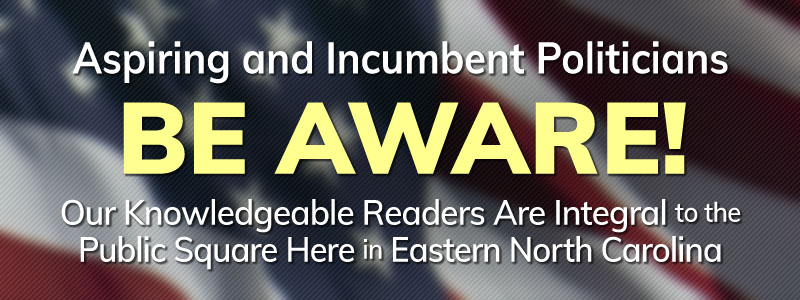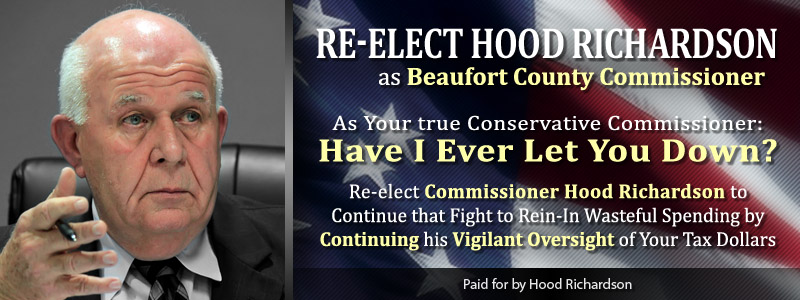Stewards of the Visual Exposition
The U.S. Has a Rich English History
When the delegates left Philadelphia on September 17, not all members were happy with the final document. Three high profile delegates refused to sign it: George Mason (Virginia), Edmund Randolph (Virginia), and George Mason (Virginia), and Elbridge Gerry (Massachusetts). They were opposed to the draft on several grounds. They wanted slavery to be abolished in the newly-independent nation, they believed the federal government had too much power, they believed the government would exert too much power over the states and burden their sovereignty, and most of all they believed that the Constitution allowed for too much abuse by the federal government.. that it would easily grow to "become destructive of the ends" for which it was designed to serve.
The Convention might have wrapped up on September 17, 1787, but the battle for ratification was just beginning. The delegates left the Convention in 1787 and returned home, knowing the real task was still ahead of them - selling their document to the individual states for ratification. It would take another 4 years for the Constitution to be adopted. The individual states now would have to review the Constitution and decide whether to ratify and adopt it, thereby agreeing to be bound by its provisions. When the Convention finished its work, it did not include a Bill of Rights in the final version of the Constitution. Several members, notably George Mason, were very disappointed by this decision and refused to sign the document over the issue. They believed that the new Constitution provided insufficiently bridled federal power. Those who argued that the Constitution did not need such a Bill of Rights (ie, the Federalists) rationalized that it wasn't necessary. After all, the Constitution did not give the new federal government the ability to restrict inherent rights, so no list of those rights was necessary. Others worried that if the rights were listed, they would invariably forget some and the list would ever be incomplete. And still others argued that the states each had their own constitutions (some even with a Bill of Rights), and that rights were best protected at a state level. [Note that Alexander Hamilton addressed these reasons in the Federalist Papers No. 84]. Within 10 days after the Constitutional Convention wrapped up and the delegates returned home, a letter was printed in the New York Journal urging the people of that state to reject the new compact. The author of the letter used the pseudonym "Cato", although many believed that it was their own Governor - Governor George Clinton.
According to Article VII of the Constitution, conventions in nine states had to ratify the document in order for it to become effective and binding. Some states were highly in favor of the new Constitution and ratified it quickly. Those states were Delaware, Pennsylvania, and New Jersey; they ratified within three months. Georgia and Connecticut ratified one month later (January 1788). But then the ratification began to heat up. The remaining states weren't as captivated with the Constitution as the earlier ones. Massachusetts, New York, and Virginia, key states both in terms of population and stature (they also sent some of the most important and influential delegates to the Convention) thought the Constitution concentrated too much power in a federal government and would likely not ratify. Debates in Massachusetts were heated, and only after assurances were given that their fears were misguided and that a Bill of Rights would be added, the state ratified. Given such assurances, other states followed - Maryland, South Carolina, and New Hampshire. This brought the total to the magical number of nine and the Constitution, on June 21, 1788, went into effect. The nine states were officially united and bound by the charter.
New York and Virginia still remained and it was highly doubtful that they would ratify and that the new Constitution would survive without the approval without these states. The battle now went into high gear. Early in the ratification process, proponents of the Constitution took the name "Federalists." Their goal was to correct the shortcomings of the Articles of Confederation and that necessarily meant supporting a federal government with centralized functions. (But of limited, clearly-defined functions). Ironically, however, those who would oppose the Constitution because they wanted a more purely federal system (greater States' rights, as Amendments 1-10 would later provide), were forced to take the name "Anti-Federalists." They wanted it to be known that they 'opposed' the Federalists.
It was clear at the time that a negative vote by either of two key states -- New York or Virginia -- could destroy the whole plan for the new Constitution because of their size and power. Both New York and Virginia delegates were sharply divided in their opinions of the Constitution and New York's Governor, George Clinton, had already made it known that he opposed its ratification. The Anti-Federalists held considerable political power at the time and leaders such as Clinton and Virginia's George Mason, sat firmly in that camp.
In response to the speeches and letters of the Anti-Federalists, and in response to the tenuous situation posed by New York and Virginia, the Federalists wrote their own letters. Alexander Hamilton of New York, James Madison of Virginia, and John Jay (also of NY) wrote a series of letters under the shared pseudonym "Publius" in which they explained and defended the Constitution. Their purpose was to persuade the New York convention to ratify the proposed Constitution but even more, they wanted to specifically answer the charges of the Anti-Federalists who were concerned that the new Constitution would take too much power from the states and the people and concentrate them in a central government. Their letters were published "to the people of New York" but were later collected into a volume called the Federalist Papers. With respect to the authors of the Federalist Papers, whatever their differences, the message was unilateral and clear: survival as a respected nation required the transfer of important, though limited and clearly enumerated, powers to the central government. This would be done without destroying the identity or autonomy of the separate states.
[Note that the Federalist Papers are viewed as the ultimate authority on the intent and interpretation of the Constitution. They were absolutely instrumental in selling the Constitution to the states. To this day (although not to members of our government or to the Justices of the Supreme Court), the Federalist Papers remain as a classic commentary on American constitutional law and the principles of government. This series has come to form the backbone of our national interpretation of the Constitution].
Of all the issues that the Anti-Federalists gave for rejecting the new Constitution, the lack of a Bill of Rights was the most compelling for many people and many states. In fact, George Mason and the others returned to their home States to lobby against the ratification of the Constitution until a Bill of Rights was added. Although the Constitution was eventually ratified, a clear message had been delivered: there was strong sentiment demanding the inclusion of a Bill of Rights. In a letter dated December 20, 1787 to Madison, Thomas Jefferson called the omission of a Bill of Rights a major mistake. He wrote: "A Bill of Rights is what the people are entitled to against every government, and what no just government should refuse, or rest on inference." Jefferson and Madison both argued that a declaration of rights would help establish the government, and especially the judiciary, as "guardians" of individual rights.
As the progression for state ratification of the Constitution continued, reports from June 2-25, 1788 show clearly that in the state of Virginia, Patrick Henry, George Mason, and Edmund Randolph led the fight for the Bill of Rights. Up until this point, James Madison continued to oppose such a bill. Henry's passionate speeches of June 5 and June 7 resulted in Virginia's motion that a Bill of Rights be added to the Constitution (after all, Virginia's Constitution had one); and on June 25, the Virginia Convention selected George Mason to chair a committee to prepare a proposed Bill of Rights, with Patrick Henry and John Randolph as members. New York and Virginia, and in fact, all thirteen states eventually ratified the Constitution. Virginia ratified in June 1788 and New York ratified the following month. The Constitution went into effect on March 3, 1789 and George Washington was elected our first President on April 30. The states ratified it in reliance on the promise to respect state sovereignty -- the keep power closest to the people. As Hamilton acknowledged in the Federalist No. 31: "The State governments, by their original constitutions, are invested with complete sovereignty..... As in republics, strength is always on the side of the people, and as there are weighty reasons to induce a belief that the State governments will commonly possess most influence over them... (We must) confine our attention wholly to the nature and extent of the powers as they are delineated in the Constitution. Everything beyond this must be left to the prudence and firmness of the people; who, as they will hold the scales in their own hands, it is to be hoped, will always take care to preserve the constitutional equilibrium between the general and the State governments."
The first Congress under the Constitution had a lot to accomplish. It had many new powers not available to the original Congress under the Articles of Confederation, and every state had interests it wanted to protect. James Madison, seen by many as the Father of the Constitution, had won a seat in the House of Representatives, running partly on a platform that included, of all things, addition of a Bill of Rights. It was Jefferson and Mason who succeeded in finally convincing him of the necessity. The truth of the matter was that Madison understood the grim political reality that without one, it was unlikely the new Constitution would receive widespread public acceptance. Once he won a seat in the House, he formally withdrew his opposition and began work on the amendments (Bill of Rights) that the states were demanding.
On June 8, 1789, Madison presented his draft of the amendments to the Constitution in order to get the discussion moving in Congress. Madison drafted the amendments drawing on the ideas put forth in the Virginia Declaration of Rights, which were written by George Mason. From June to September, both houses of Congress debated these amendments, along with additional ones presented by the individual states. Rights were enumerated, removed, modified, and tweaked. Eventually, both houses agreed on twelve articles of amendment and sent them to the states. Two years later, on December 15, 1791, ten of these original twelve were ratified by the states and they became a part of the Constitution as the Bill of Rights. (By custom, the amendments were added to the end of the original document, rather than inserted in the text, as Madison had envisioned.)
As Joe Wolverton II wrote in The New American magazine: "It can be said that from the ashes of the Articles of Confederation a phoenix arose in the form of a mighty eagle, emblem of the new American Republic. The Convention of 1787 took the weaknesses of the Articles and transformed them into the strengths of a new Constitution." Just as the English Bill of Rights did before it, just about every right listed in the Bill of Rights was a response to something the British government had done to the colonists (British subjects). For example, the first amendment was in response to oppression based on religion. The third amendment was in response to the Quartering Act. And the Due Process clause of the fifth amendment was in response to repeated instances of confiscation without compensation. Our Founders recognized the fact that to list all the fundamental rights held by individuals would be an exercise in futility, they included the Ninth Amendment, lest the Constitution be construed to acknowledge only a handful of rights that government can't regulate and deny - "The enumeration in the Constitution of certain rights shall not be construed to deny or disparage others retained by the people." There were 55 individuals directly involved in framing the Constitution at the Constitutional Convention, and an additional ninety in the first federal Congress that framed the First Amendment and Bill of Rights. Allowing for the overlap of nineteen individuals who were both at the Constitutional Convention and a part of the first Congress, there were 126 individual participants in the framing of the Constitution and the Bill of Rights.
The Constitutional Convention of 1787 produced the most enduring written Constitution ever created by human hands. As Ben Franklin noted in a speech on that final day urging all delegates to sign the document and to do so immediately, the Constitution may have its faults, but it is possible that no better document could have been created. It is a documented created for We the People, so we can be assured of our rights with respect to our government... just as the English accomplished with their Magna Carta and their English Bill of Rights. The Magna Carta and the English Bill of Rights sought to protect against tyranny in England and our U.S. Constitution and Bill of Rights serve the same purpose - to safeguard the individual freedoms of all Americans against arbitrary, self-serving government. On March 30, 1789, the Constitution, at last, became the "the supreme Law of the Land" - just as Magna Carta had been deemed superior to other statutes. In 1215, when King John confirmed Magna Carta with his seal, he acknowledged the concept that is now firmly-embedded in the fabric of all free nations - that no man, not even the King - is above the law. And the US Constitution stands above all other documents in the scope of the individual rights that are respected and protected. John Adams summed it up this way: "We are a government of laws, and not of men."
Unlike the Magna Carta and English Bill of Rights which lists and establishes the rights of the individual with respect to government, the Constitution actually requires that the PRIMARY RESPONSIBILITY OF GOVERNMENT is the protection of individual rights. Our Founders took what the British had achieved and secured the rights of the individual even more judiciously. The designed the Constitution specifically to put into practice the fundamental principle of the Declaration of Independence: that the people form their governments and grant to them only "just powers" - limited powers - in order to secure their God-given, unalienable rights. And just like the English had done before them, our Founders established the Constitution as our nation's charter of individual freedom with an express provision making it the supreme law of the land.
The Constitution is the foundation of our nation. It guarantees our liberty. It does not give us liberty. Our liberty comes from our humanity and our bond with our Creator. Rather, it guarantees and protects our liberty. (This is an important distinction). With the Bill of Rights and Declaration of Independence, it constitutes the charter of our freedom. For people who cherish their liberty and its roots, it is imperative to understand how the Declaration of Independence and the Constitution fit together. First, the Declaration proclaims to the world that in the United States we acknowledge that there is a God - a "Creator" - who supersedes any government and whose intention it is that all men are to live free and to reap the benefits of such freedom. If all men are bestowed with innate liberties, then all men must be on equal footing and therefore are equal. The Declaration then states: "That to secure these rights, Governments are instituted among Men, deriving their just powers from the consent of the governed.." This statement outlines the very purpose of our Constitution --- "To secure our rights." (To secure the rights that God has bestowed upon us). And finally comes our obligation to protect this very special arrangement -- "governments are instituted among Men, deriving their just powers from the consent of the governed." The federal government is a creation of We the People. It gets its "just" powers from us. The dictionary defines "just" as "morally right and fair." If we aren't "just," then our government will not be "just." Our Republic is simple yet magnificent in design. As human beings, we have been gifted a magnificent brain and reasoning powers (gifts that have still not "evolved" in other species) and the freedoms to develop those gifts to the fullest. Our lives are to be defined by how well we develop our gifts and how ambitious we are in furthering those pursuits. Our government is charged with protecting our freedoms so that we can enjoy Life and pursue Happiness (which includes property and intellectual property, or career). To make sure that our government does just that, our Founders tied the government intimately with those who have the greatest interest in liberty - "We the People." We are the keepers of the government. We are the watchdogs of our own liberties. We send the people who run government, we determine its character, we determine its policies, we determine whether it runs as it should, we determine whether it adheres to our Constitution, and we determine whether it follows that one true formula that can assure that our liberties will be protected and our country will stand the test of time. As Patrick Henry told us: "The Constitution is not an instrument for the government to restrain the people; It is an instrument for the people to restrain the government - lest it comes to dominate our lives and interests." Ayn Rand, novelist and philosopher, also understood the relationship. She wrote: "The US Constitution is a limitation on the government, not on private individuals... It does not prescribe the conduct of private individuals, only the conduct of the government... It is not a charter for government power, but a charter of the citizen's protection against the government."
Go Back
The Convention might have wrapped up on September 17, 1787, but the battle for ratification was just beginning. The delegates left the Convention in 1787 and returned home, knowing the real task was still ahead of them - selling their document to the individual states for ratification. It would take another 4 years for the Constitution to be adopted. The individual states now would have to review the Constitution and decide whether to ratify and adopt it, thereby agreeing to be bound by its provisions. When the Convention finished its work, it did not include a Bill of Rights in the final version of the Constitution. Several members, notably George Mason, were very disappointed by this decision and refused to sign the document over the issue. They believed that the new Constitution provided insufficiently bridled federal power. Those who argued that the Constitution did not need such a Bill of Rights (ie, the Federalists) rationalized that it wasn't necessary. After all, the Constitution did not give the new federal government the ability to restrict inherent rights, so no list of those rights was necessary. Others worried that if the rights were listed, they would invariably forget some and the list would ever be incomplete. And still others argued that the states each had their own constitutions (some even with a Bill of Rights), and that rights were best protected at a state level. [Note that Alexander Hamilton addressed these reasons in the Federalist Papers No. 84]. Within 10 days after the Constitutional Convention wrapped up and the delegates returned home, a letter was printed in the New York Journal urging the people of that state to reject the new compact. The author of the letter used the pseudonym "Cato", although many believed that it was their own Governor - Governor George Clinton.
According to Article VII of the Constitution, conventions in nine states had to ratify the document in order for it to become effective and binding. Some states were highly in favor of the new Constitution and ratified it quickly. Those states were Delaware, Pennsylvania, and New Jersey; they ratified within three months. Georgia and Connecticut ratified one month later (January 1788). But then the ratification began to heat up. The remaining states weren't as captivated with the Constitution as the earlier ones. Massachusetts, New York, and Virginia, key states both in terms of population and stature (they also sent some of the most important and influential delegates to the Convention) thought the Constitution concentrated too much power in a federal government and would likely not ratify. Debates in Massachusetts were heated, and only after assurances were given that their fears were misguided and that a Bill of Rights would be added, the state ratified. Given such assurances, other states followed - Maryland, South Carolina, and New Hampshire. This brought the total to the magical number of nine and the Constitution, on June 21, 1788, went into effect. The nine states were officially united and bound by the charter.
New York and Virginia still remained and it was highly doubtful that they would ratify and that the new Constitution would survive without the approval without these states. The battle now went into high gear. Early in the ratification process, proponents of the Constitution took the name "Federalists." Their goal was to correct the shortcomings of the Articles of Confederation and that necessarily meant supporting a federal government with centralized functions. (But of limited, clearly-defined functions). Ironically, however, those who would oppose the Constitution because they wanted a more purely federal system (greater States' rights, as Amendments 1-10 would later provide), were forced to take the name "Anti-Federalists." They wanted it to be known that they 'opposed' the Federalists.
It was clear at the time that a negative vote by either of two key states -- New York or Virginia -- could destroy the whole plan for the new Constitution because of their size and power. Both New York and Virginia delegates were sharply divided in their opinions of the Constitution and New York's Governor, George Clinton, had already made it known that he opposed its ratification. The Anti-Federalists held considerable political power at the time and leaders such as Clinton and Virginia's George Mason, sat firmly in that camp.
In response to the speeches and letters of the Anti-Federalists, and in response to the tenuous situation posed by New York and Virginia, the Federalists wrote their own letters. Alexander Hamilton of New York, James Madison of Virginia, and John Jay (also of NY) wrote a series of letters under the shared pseudonym "Publius" in which they explained and defended the Constitution. Their purpose was to persuade the New York convention to ratify the proposed Constitution but even more, they wanted to specifically answer the charges of the Anti-Federalists who were concerned that the new Constitution would take too much power from the states and the people and concentrate them in a central government. Their letters were published "to the people of New York" but were later collected into a volume called the Federalist Papers. With respect to the authors of the Federalist Papers, whatever their differences, the message was unilateral and clear: survival as a respected nation required the transfer of important, though limited and clearly enumerated, powers to the central government. This would be done without destroying the identity or autonomy of the separate states.
[Note that the Federalist Papers are viewed as the ultimate authority on the intent and interpretation of the Constitution. They were absolutely instrumental in selling the Constitution to the states. To this day (although not to members of our government or to the Justices of the Supreme Court), the Federalist Papers remain as a classic commentary on American constitutional law and the principles of government. This series has come to form the backbone of our national interpretation of the Constitution].
Of all the issues that the Anti-Federalists gave for rejecting the new Constitution, the lack of a Bill of Rights was the most compelling for many people and many states. In fact, George Mason and the others returned to their home States to lobby against the ratification of the Constitution until a Bill of Rights was added. Although the Constitution was eventually ratified, a clear message had been delivered: there was strong sentiment demanding the inclusion of a Bill of Rights. In a letter dated December 20, 1787 to Madison, Thomas Jefferson called the omission of a Bill of Rights a major mistake. He wrote: "A Bill of Rights is what the people are entitled to against every government, and what no just government should refuse, or rest on inference." Jefferson and Madison both argued that a declaration of rights would help establish the government, and especially the judiciary, as "guardians" of individual rights.
As the progression for state ratification of the Constitution continued, reports from June 2-25, 1788 show clearly that in the state of Virginia, Patrick Henry, George Mason, and Edmund Randolph led the fight for the Bill of Rights. Up until this point, James Madison continued to oppose such a bill. Henry's passionate speeches of June 5 and June 7 resulted in Virginia's motion that a Bill of Rights be added to the Constitution (after all, Virginia's Constitution had one); and on June 25, the Virginia Convention selected George Mason to chair a committee to prepare a proposed Bill of Rights, with Patrick Henry and John Randolph as members. New York and Virginia, and in fact, all thirteen states eventually ratified the Constitution. Virginia ratified in June 1788 and New York ratified the following month. The Constitution went into effect on March 3, 1789 and George Washington was elected our first President on April 30. The states ratified it in reliance on the promise to respect state sovereignty -- the keep power closest to the people. As Hamilton acknowledged in the Federalist No. 31: "The State governments, by their original constitutions, are invested with complete sovereignty..... As in republics, strength is always on the side of the people, and as there are weighty reasons to induce a belief that the State governments will commonly possess most influence over them... (We must) confine our attention wholly to the nature and extent of the powers as they are delineated in the Constitution. Everything beyond this must be left to the prudence and firmness of the people; who, as they will hold the scales in their own hands, it is to be hoped, will always take care to preserve the constitutional equilibrium between the general and the State governments."
The first Congress under the Constitution had a lot to accomplish. It had many new powers not available to the original Congress under the Articles of Confederation, and every state had interests it wanted to protect. James Madison, seen by many as the Father of the Constitution, had won a seat in the House of Representatives, running partly on a platform that included, of all things, addition of a Bill of Rights. It was Jefferson and Mason who succeeded in finally convincing him of the necessity. The truth of the matter was that Madison understood the grim political reality that without one, it was unlikely the new Constitution would receive widespread public acceptance. Once he won a seat in the House, he formally withdrew his opposition and began work on the amendments (Bill of Rights) that the states were demanding.
On June 8, 1789, Madison presented his draft of the amendments to the Constitution in order to get the discussion moving in Congress. Madison drafted the amendments drawing on the ideas put forth in the Virginia Declaration of Rights, which were written by George Mason. From June to September, both houses of Congress debated these amendments, along with additional ones presented by the individual states. Rights were enumerated, removed, modified, and tweaked. Eventually, both houses agreed on twelve articles of amendment and sent them to the states. Two years later, on December 15, 1791, ten of these original twelve were ratified by the states and they became a part of the Constitution as the Bill of Rights. (By custom, the amendments were added to the end of the original document, rather than inserted in the text, as Madison had envisioned.)
As Joe Wolverton II wrote in The New American magazine: "It can be said that from the ashes of the Articles of Confederation a phoenix arose in the form of a mighty eagle, emblem of the new American Republic. The Convention of 1787 took the weaknesses of the Articles and transformed them into the strengths of a new Constitution." Just as the English Bill of Rights did before it, just about every right listed in the Bill of Rights was a response to something the British government had done to the colonists (British subjects). For example, the first amendment was in response to oppression based on religion. The third amendment was in response to the Quartering Act. And the Due Process clause of the fifth amendment was in response to repeated instances of confiscation without compensation. Our Founders recognized the fact that to list all the fundamental rights held by individuals would be an exercise in futility, they included the Ninth Amendment, lest the Constitution be construed to acknowledge only a handful of rights that government can't regulate and deny - "The enumeration in the Constitution of certain rights shall not be construed to deny or disparage others retained by the people." There were 55 individuals directly involved in framing the Constitution at the Constitutional Convention, and an additional ninety in the first federal Congress that framed the First Amendment and Bill of Rights. Allowing for the overlap of nineteen individuals who were both at the Constitutional Convention and a part of the first Congress, there were 126 individual participants in the framing of the Constitution and the Bill of Rights.
The Constitutional Convention of 1787 produced the most enduring written Constitution ever created by human hands. As Ben Franklin noted in a speech on that final day urging all delegates to sign the document and to do so immediately, the Constitution may have its faults, but it is possible that no better document could have been created. It is a documented created for We the People, so we can be assured of our rights with respect to our government... just as the English accomplished with their Magna Carta and their English Bill of Rights. The Magna Carta and the English Bill of Rights sought to protect against tyranny in England and our U.S. Constitution and Bill of Rights serve the same purpose - to safeguard the individual freedoms of all Americans against arbitrary, self-serving government. On March 30, 1789, the Constitution, at last, became the "the supreme Law of the Land" - just as Magna Carta had been deemed superior to other statutes. In 1215, when King John confirmed Magna Carta with his seal, he acknowledged the concept that is now firmly-embedded in the fabric of all free nations - that no man, not even the King - is above the law. And the US Constitution stands above all other documents in the scope of the individual rights that are respected and protected. John Adams summed it up this way: "We are a government of laws, and not of men."
Unlike the Magna Carta and English Bill of Rights which lists and establishes the rights of the individual with respect to government, the Constitution actually requires that the PRIMARY RESPONSIBILITY OF GOVERNMENT is the protection of individual rights. Our Founders took what the British had achieved and secured the rights of the individual even more judiciously. The designed the Constitution specifically to put into practice the fundamental principle of the Declaration of Independence: that the people form their governments and grant to them only "just powers" - limited powers - in order to secure their God-given, unalienable rights. And just like the English had done before them, our Founders established the Constitution as our nation's charter of individual freedom with an express provision making it the supreme law of the land.
The Constitution is the foundation of our nation. It guarantees our liberty. It does not give us liberty. Our liberty comes from our humanity and our bond with our Creator. Rather, it guarantees and protects our liberty. (This is an important distinction). With the Bill of Rights and Declaration of Independence, it constitutes the charter of our freedom. For people who cherish their liberty and its roots, it is imperative to understand how the Declaration of Independence and the Constitution fit together. First, the Declaration proclaims to the world that in the United States we acknowledge that there is a God - a "Creator" - who supersedes any government and whose intention it is that all men are to live free and to reap the benefits of such freedom. If all men are bestowed with innate liberties, then all men must be on equal footing and therefore are equal. The Declaration then states: "That to secure these rights, Governments are instituted among Men, deriving their just powers from the consent of the governed.." This statement outlines the very purpose of our Constitution --- "To secure our rights." (To secure the rights that God has bestowed upon us). And finally comes our obligation to protect this very special arrangement -- "governments are instituted among Men, deriving their just powers from the consent of the governed." The federal government is a creation of We the People. It gets its "just" powers from us. The dictionary defines "just" as "morally right and fair." If we aren't "just," then our government will not be "just." Our Republic is simple yet magnificent in design. As human beings, we have been gifted a magnificent brain and reasoning powers (gifts that have still not "evolved" in other species) and the freedoms to develop those gifts to the fullest. Our lives are to be defined by how well we develop our gifts and how ambitious we are in furthering those pursuits. Our government is charged with protecting our freedoms so that we can enjoy Life and pursue Happiness (which includes property and intellectual property, or career). To make sure that our government does just that, our Founders tied the government intimately with those who have the greatest interest in liberty - "We the People." We are the keepers of the government. We are the watchdogs of our own liberties. We send the people who run government, we determine its character, we determine its policies, we determine whether it runs as it should, we determine whether it adheres to our Constitution, and we determine whether it follows that one true formula that can assure that our liberties will be protected and our country will stand the test of time. As Patrick Henry told us: "The Constitution is not an instrument for the government to restrain the people; It is an instrument for the people to restrain the government - lest it comes to dominate our lives and interests." Ayn Rand, novelist and philosopher, also understood the relationship. She wrote: "The US Constitution is a limitation on the government, not on private individuals... It does not prescribe the conduct of private individuals, only the conduct of the government... It is not a charter for government power, but a charter of the citizen's protection against the government."
| "Every Picture Tells a Story ... Don't It:" An August Afternoon in Charleston, Part II | In the Past, Body & Soul | The Constitutional Convention of 1787: A Miracle in Philadelphia |

























